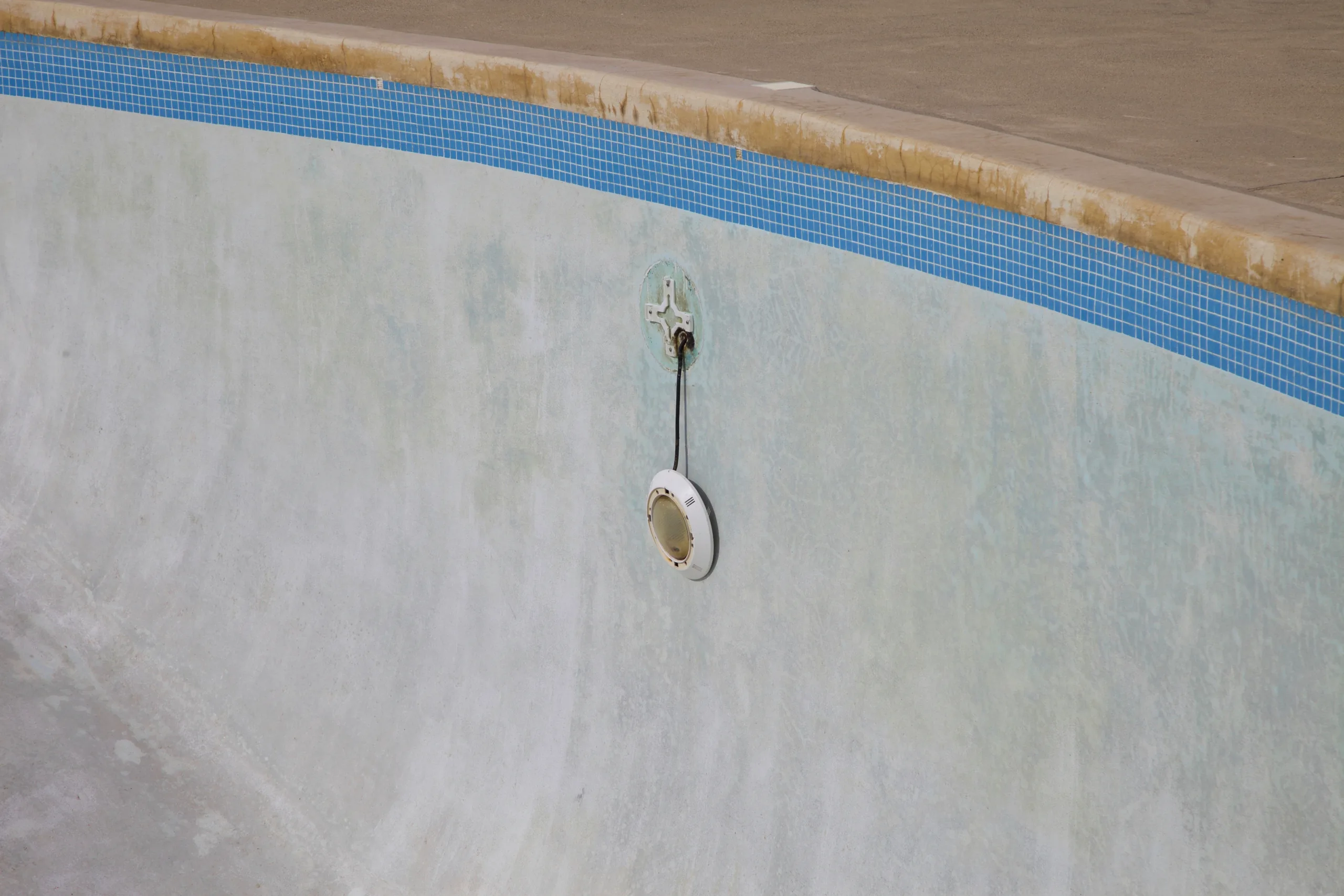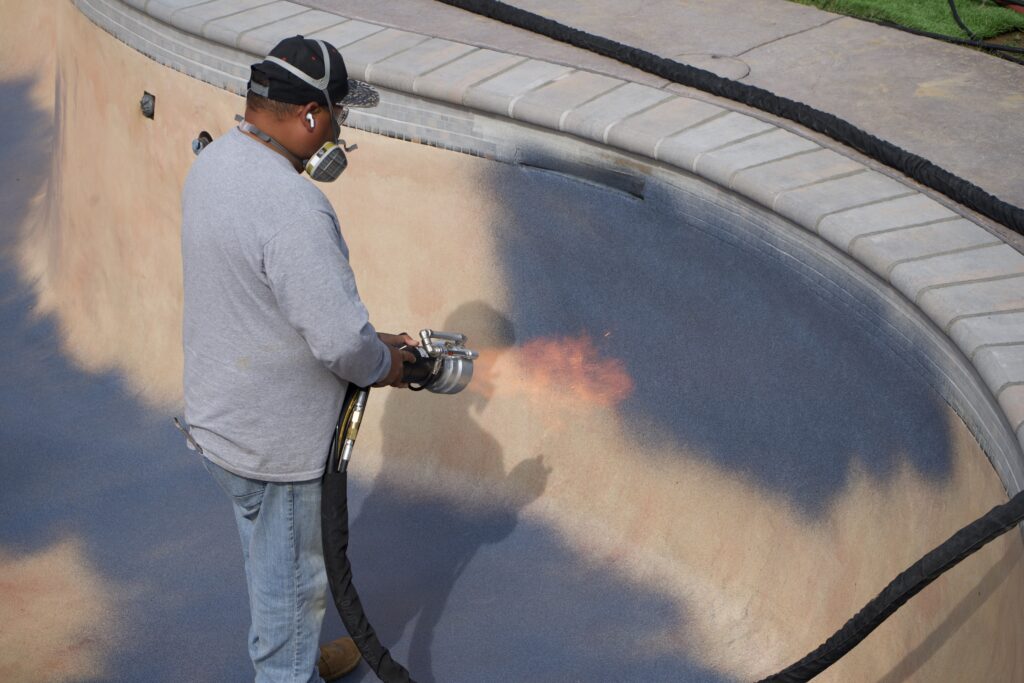What Time of Year is Best to Resurface a Pool?

Deciding when to resurface your pool can be a tough call. On average, pools need attention every eight to ten years. This blog will guide you through recognizing the best time for pool resurfacing, considering factors like plaster curing and swimming season schedules.
Best Time of Year to Resurface Your Pool
To achieve the best results, resurface your pool during fall and winter when demand is lower. This allows for a more efficient process with benefits such as faster curing time for your resurfaced pool.
Fall and Winter
Resurfacing a pool during the fall and winter seasons offers several benefits. Off-season remodeling can provide more flexible scheduling, as pool professionals are less busy during this time.
The cooler weather also creates an ideal environment for curing plaster, ensuring it sets properly. This allows sufficient time for the plaster to cure before the swimming season begins, enabling proper water chemistry management.
Resurfacing a pool in the off-season can lead to minimal disruption of regular pool usage while also preparing it for optimal performance when warmer weather arrives. Knowing the difference between resurfacing and replastering will help you find the right timeline for you.
Benefits of Off-Season Remodeling
Choosing the colder months for pool resurfacing can bring numerous advantages. One significant benefit is cost savings as contractors may offer discounted rates during their less busy periods, while materials and labor costs tend to be lower.
Moreover, scheduling off-season remodeling reduces the disruption of pool usage as it minimizes the impact on your swimming season. With decreased demand for contractor services in these seasons, project timelines are more flexible, ensuring better attention to detail and meticulous execution.
Factors to Consider
Before deciding on pool resurfacing, consider factors such as the current condition of your pool’s surface, expected lifespan of different resurfacing materials, and any aesthetic preferences you have for the finish. These considerations will help you make an informed decision on when you should get your pool resurfaced.
Curing Time for Plaster
After resurfacing a pool, plaster needs around 7-10 days to cure before it’s ready for water. During this time, the pool should be kept empty to allow the plaster to set properly. Once filled with water, it takes another 2-3 weeks for the water chemistry to balance and stabilize.
This entails monitoring and adjusting chemical levels regularly as the plaster cures, ensuring proper maintenance for a long-lasting surface.
Resurfacing during fall or winter provides ample time for curing before the swimming season begins. This timing allows owners to address any issues that may arise during the curing process without disrupting summer swim plans.
What Finish Has The Fastest Start-Up Process?
Colored masonry coatings typically require a two-week start-up process called a “low alkalinity burn” or a “hot start.” The process normally involves your pool company pouring muriatic acid into your pool to burn the leaching calcium off the curing masonry.
However, using a finish like aquaBRIGHT from ecoFINISH will allow you to completely skip that process. aquaBRIGHT is a durable, plastic finish, that does not require any caustic or complicated start-up process after installation.
Choosing aquaBRIGHT means you can get your pool resurfaced in the warmer months because there’s no waiting period for a special start-up process. This can streamline your project timeline and ensure you can swim in a pool soon after resurfacing.

Signs to Look For
Knowing when to resurface your pool is key to maintaining its beauty and function. Look out for these clear signs that indicate it’s time for pool resurfacing.
- Stains become a common sight, suggesting issues with water chemistry or the beginning of wear and tear.
- You notice cracks in the pool surface, which could lead to bigger problems if ignored.
- The texture of the pool surface feels rougher underfoot, making it uncomfortable for swimmers.
- Pieces of the plaster start to chip away, indicating the material’s age and exposure to chemicals over time.
- The pool starts to leak, which can be due to various reasons including a compromised surface.
- There’s a visible discoloration across large areas of the pool, pointing towards chemical imbalances or algae growth that regular cleaning doesn’t remove.
- Algae begins to cling more easily to the pool’s surfaces, even with proper chemical treatment, hinting at a rough and porous plaster that needs replacing.
- Frequent need for more extensive pool repairs suggests underlying issues that resurfacing could solve.
- Water chemistry becomes increasingly difficult to balance due to the deteriorating condition of the pool surfaces affecting PH levels and other measures.
- Your concrete swimming pool has been in service for over 10 years without any major surface maintenance, reaching into the timeframe when resurfacing becomes necessary.
Each of these signs points towards an urgent need for swimming pool maintenance or complete resurfacing to extend its lifespan and ensure safe, enjoyable use for years to come.
Importance of Proper Timing
After considering the signs and factors for resurfacing a pool, it is crucial to understand the importance of proper timing. The best time to resurface a pool is at the beginning of the swimming season, ensuring enough time for plaster curing and water chemistry management.
Resurfacing during fall or winter allows ample time for any needed maintenance before the swimming season begins. This off-peak period also facilitates proper curing of plaster without interrupting usage.
Conclusion
The best time to resurface a pool is just before the start of the swimming season. Signs such as developing stains may indicate it’s time for maintenance. Proper timing and curing are crucial after resurfacing.
However, resurfacing during fall and winter offers benefits for off-season remodeling, including cost savings and allowing enough time for plaster to cure.
Resurfacing at the right time ensures proper management of water chemistry and extends the pool’s lifespan. Delaying resurfacing can be an option but watch out for signs of wear and tear in concrete pools. Next, check out what to do after pool resurfacing.
FAQs
The best time of year to perform swimming pool resurfacing, including replastering and concrete swimming pools repair, varies depending on your location and climate.
While some people may attempt DIY projects, professional services are often recommended for tasks like replastering or concrete swimming pools restoration due to their complexity.
If you don’t resurface your pool, you risk compromising its structural integrity, safety for swimmers, and water quality. Neglecting this maintenance can lead to increased costs for repairs and potentially decrease your property’s value over time.
